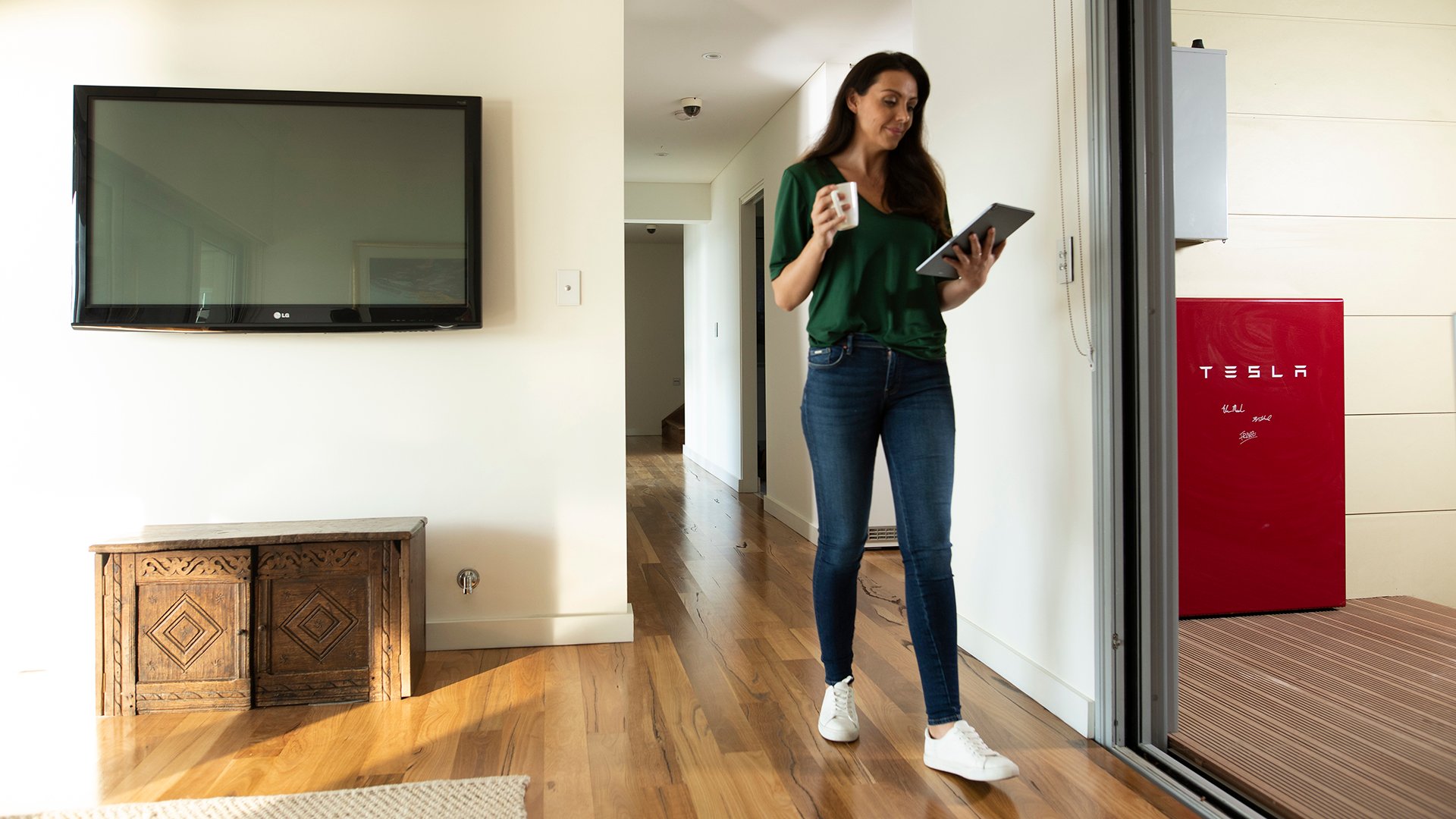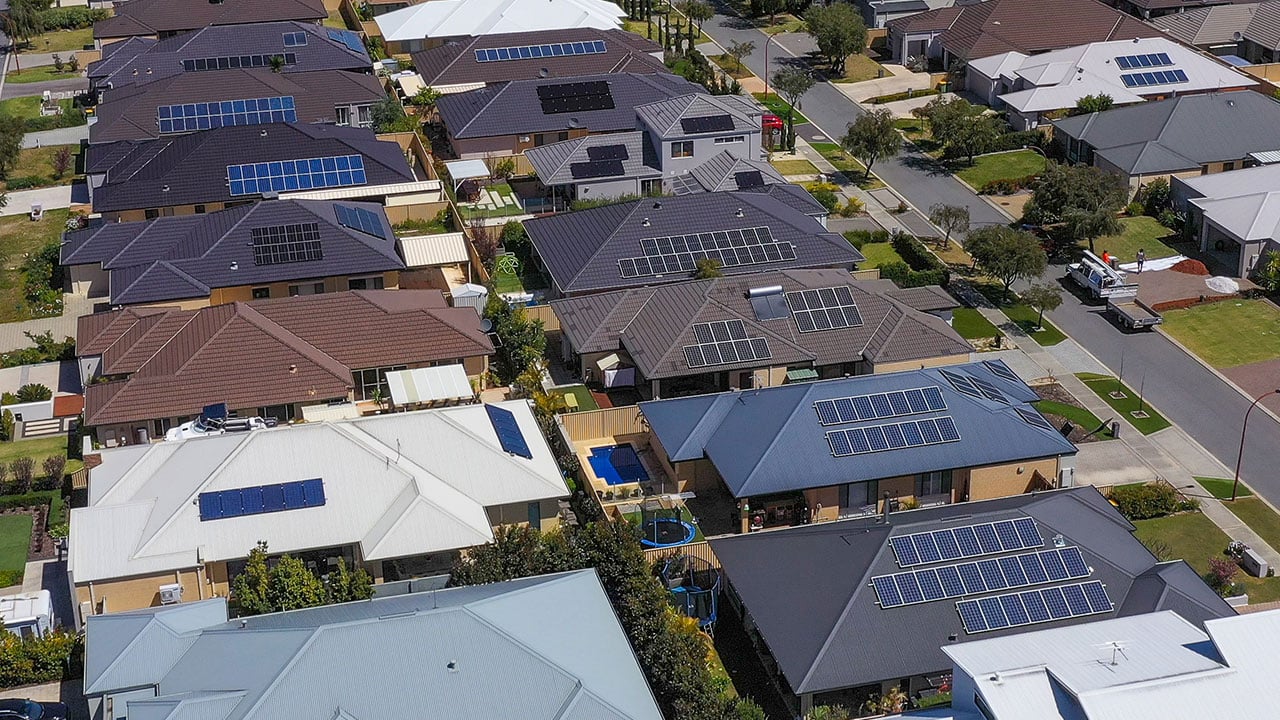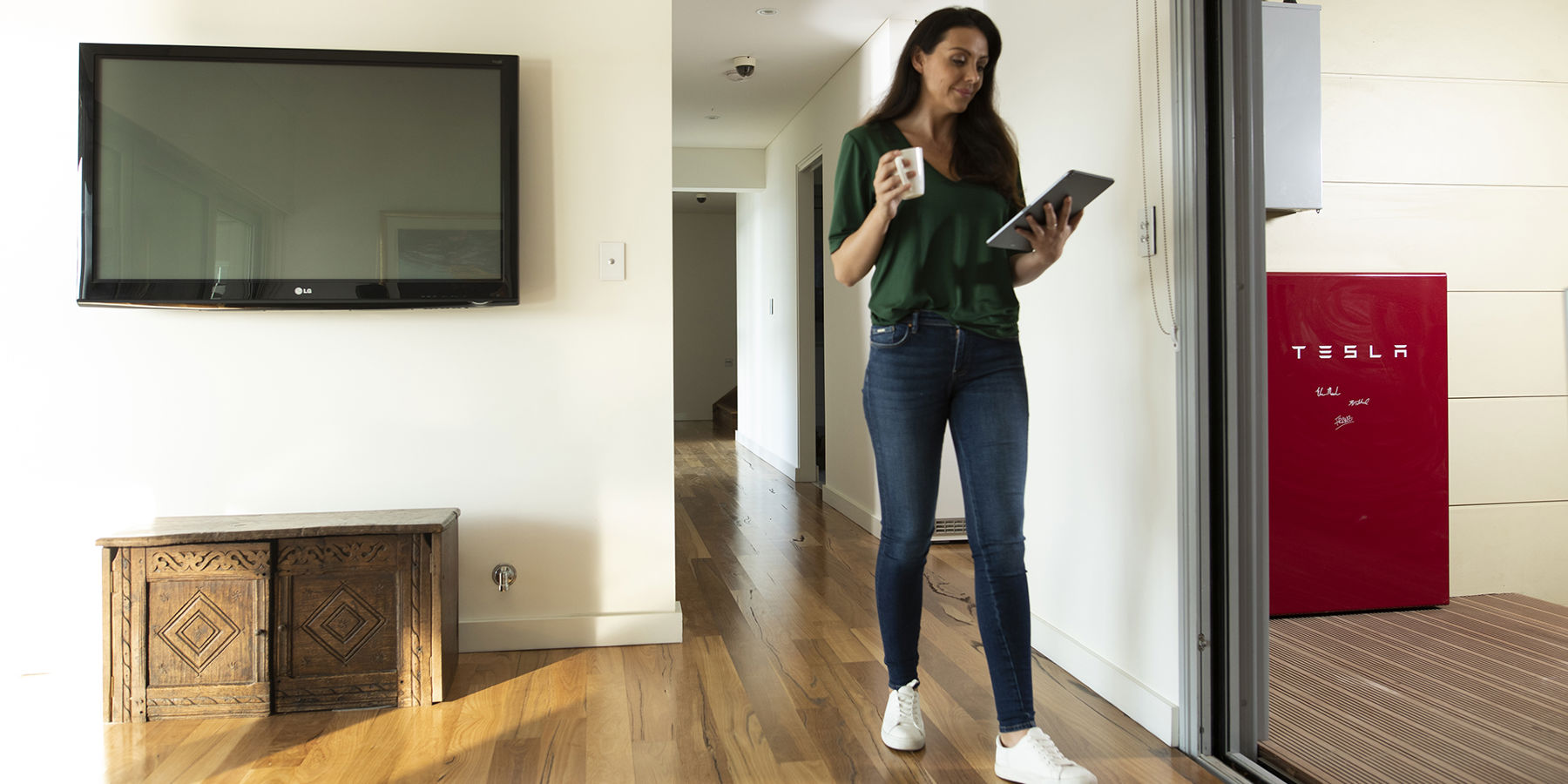As our world quickly moves towards electrification, it’s now the norm to have solar panels, and batteries won’t be far off.
However, there are a few myths out there about solar, batteries and the grid work together. We de-bunk the top four.
1. Having a battery will disconnect you from the grid
Having a home battery does not disconnect you from the grid. Unless you contact us or Synergy and submit a request to disconnect your supply, you are still connected to the grid.
When you install an in-home battery to store and use solar power from your rooftop, you are still connected to the grid, even if you are not using any grid power.

This is a good thing - there may be times when you do still need power from the grid. It also means that when your battery is full, you can sell your excess solar back to the grid where that renewably sourced energy can be used by others in the community.
It is true that some regional customers are physically not connected to the grid through poles and wires, as they have stand-alone power system units, which use solar panels, batteries and back-up generators installed on their properties.
However, those customers are still ‘service-connected’, as the units are maintained and managed by Western Power.
So no matter how self-sufficient your energy home is, we’re still here and connected, ready to make sure you have power if you need it.
2. Solar doesn’t make any power when its cloudy
This is not the case. As solar technology has improved, so has the capacity of the solar cells in panels to pick up the light and turn it into power.
It is true that the amount of solar power you make will reduce when its cloudy, but you still make power. So even on overcast days, keep to any routines you have of running your dishwasher or washing machine during the day, and make the most of that cost-effective sunshine.

3. My solar and battery will still work in an outage
This is an interesting one. It makes sense that if your solar is generating power to your home, it would still work during an outage. However, it’s not the case. If the grid is down, it is not safe for solar to operate, so the inverter would get the signal that the grid is down and then shut down your solar.
This is for everyone’s safety. When you generate solar, although your house uses it, you may create more than you need. The grid takes up that excess, ensuring the solar being used in your home is stable and flowing effectively, instead of the excess flowing around your home and appliances.
Secondly, if there is an outage, we need to try and fix it. If there is power flowing into the grid from solar panels near where there might be a fault, this creates an unsafe environment for our people to operate in.
However, if you have an in-home battery that has a ‘blackout’ mode, you may still be able to get solar power through your home during a blackout. In this case, while the inverter ensures no solar power is pushed on the grid, the battery acts like the grid in terms of stabilising the solar flowing into your home. It won’t provide power to your whole property – just certain circuits that you choose, such as the one that runs the fridge.
Not every home battery has this option, so you need to check when purchasing, and also make sure you are choosing a battery that is operating to Australian Standards.

4. Solar curtailment is the only solution for low-load
This is a myth. While curtailment – for very short periods of time – can be used as an emergency measure to manage fluctuations of solar on the network, but its actually the last resort.
Before solar curtailment is used, large, centralised generators are turned off or reduced to stabilise generation. Curtailment only happens when even this is not quite enough.
Solar uptake by residents and businesses will continue to grow, so we are looking at other ways to help manage the flow of these renewables safely on the network.
We’re working on a number of additional solutions, including demand management, large battery storage, advanced metering and improved electricity grid controls to manage energy flow.
It’s all part of our Energy Transformation.
